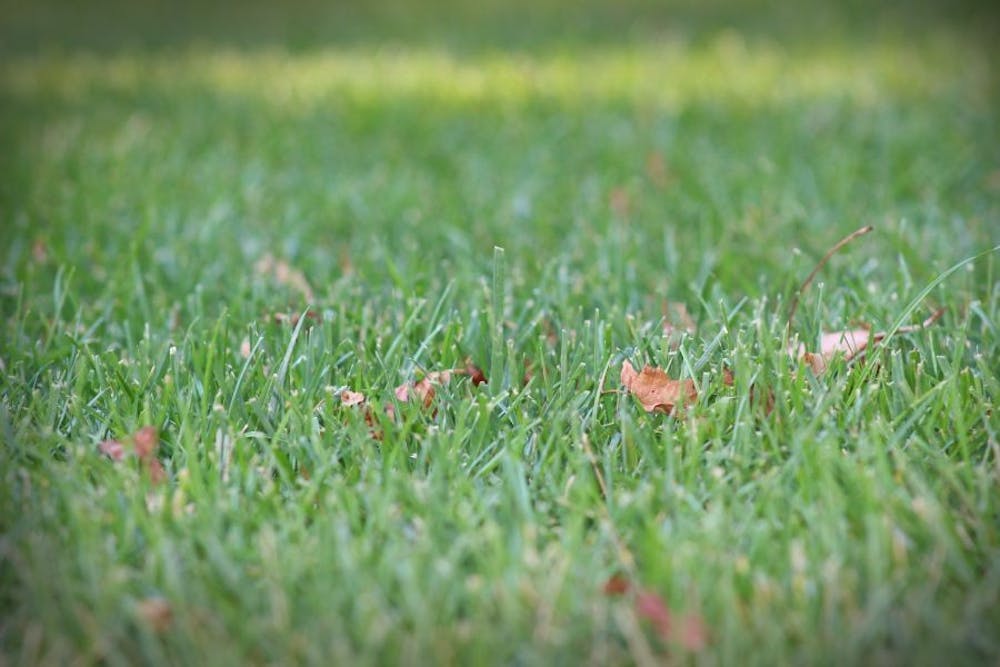By James Steinbauer, Opinion Editor
In October, Miami granted its new Food Studies Institute seven acres of land north of Yager Stadium to begin the production of an experiential garden, the focal point of the institute's educational platform.
Alfredo Huerta, a professor of biology and one of the co-starters of the new Food Institute, said the seven acres were not what he'd hoped for.
"It's not as much as we wanted," he said. "We would have liked the whole 35 acres, but we had to fight with the administration to give us even this much land."
Miami University acquired the roughly 35 acres of land north of Yager Stadium, southeast of Somerville Road and adjacent to the Ecology Research Center (ERC), in 2007 as part of a conceptual master plan for future growth.
While seven acres of this was granted to the Food Institute, the remaining 28 acres are set aside for the future expansion of intercollegiate athletics, given the land's close proximity to athletic facilities, like the recently constructed Dauch Indoor Sports Center.
"The land was simply acquired to allow for future expansion if that became necessary," said David Creamer, vice president of finance and business services. "But there is no specific plan in place today, so that was a large part of the reason the food studies request was honored."
Huerta said that, based on an analysis of soil types, the land, which is adjacent to Four Mile Creek, is composed of rich bottomland soil that is excellent for farming.
"It's supposed to be some of the best agricultural land in Butler County," Huerta said. "So we'd like to use it for what our plan is. You know, sustainable agriculture education."
Cody Powell, Miami's associate vice president of facilities, planning and operations, said if the Food Institute continues to grow, more land could be available.
"They're better off doing a pilot plan between seven and eight acres near the ERC where they can share equipment and yet not be too far for students," Powell said. "If the pilot goes well and it needs to expand, then I'm sure [the land] would go toward an academic purpose."
Although not as much as it wanted, the land will still be a necessary resource for the Food Institute to get funding from outside sources, like grants from the Environmental Protection Agency, the United States Department of Agriculture and the National Institute of Food and Agriculture.
Enjoy what you're reading?
Signup for our newsletter
More importantly, the Food Institute can now get started, prepping the land for agricultural use in the spring.
Before it was granted to the institute, Miami rented the seven acres to a local farmer who was growing conventional GMO corn and soybeans. Next semester, the Food Institute will initiate the three-year progression toward making the land organic.
Although intensive, Huerta said he hopes to capitalize on the process to teach students about the transition from land used for conventional agricultural practices to land suitable for sustainable organic farming.
The Food Institute will partition the land in the four separate agricultural areas, each with its own dedication to different sustainable farming practices.
The majority of the seven acres will be split between organic permaculture - perennial plants like berries and fruit trees - and vegetable gardens. Huerta said he wants to establish season-extension greenhouses that would allow the Food Institute to extend the growing and harvesting seasons for students doing research.
Another one to two acres of the Food Institute's land will be dedicated to the Myaamia tribe of Miami, Oklahoma. Huerta said the Myaamia center and the Food Institute have a verbal agreement to work with the tribe to grow the native plants that were useful to its culture.
"I think it's worth noting that many cultures define themselves by their foods," said Daryl Baldwin, director of the Myaamia Center and member of the Myaamia Tribe of Oklahoma, in an interview last spring. "We've long been interested in what the seasonal and traditional diet of our ancestors was."
One of the projects Huerta would like the Food Institute to be a part of is the revitalization of these native species. Through a process of selection and breeding, and through controlled manipulation, students can weed out new types of corn to produce the ancestral corn the Myaamia tribe originally used for its cultural traditions and food.
"And that's just the beginning," Huerta said. "There is so much to do. We would like to expand and grow. We would like to take over the whole 35 acres."




